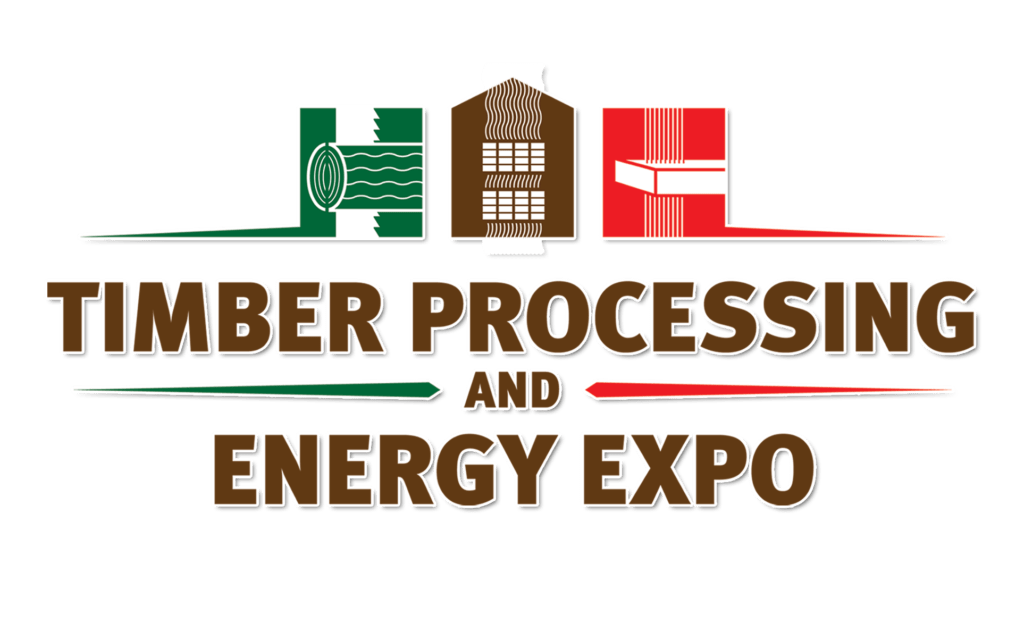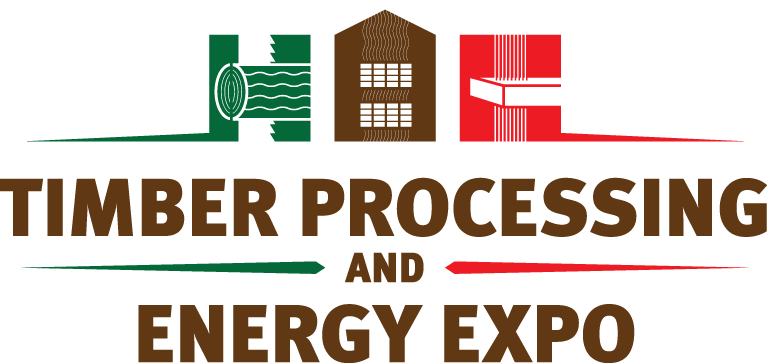
2018
PORTLAND, OREGON
The Timber Processing & Energy Expo, supported by Timber Processing magazine, Panel World magazine, Wood Bioenergy magazine and Hatton-Brown Expositions, was held at the Portland Exposition Center in Portland, Oregon, USA.
Mass Timber & EWP Workshop Presentations 2018
Wednesday, October 17
Room D202
9:10 a.m.—The Mass Timber and CLT Movement
Charles Gale, Principal, Doug Fir Consulting
The mass timber industry, primarily led by cross-laminated timber, is an emerging sector of the forest product industry in North America. It comes with tremendous upside potential transforming the traditional methods of residential and medium to high rise construction. Having several environmental, social and economic advantages over traditional building materials such as concrete and steel, it has gained momentum in both demand and supply. Major barriers remain in manufacturing as current companies work to develop, adapt, refine and grow product lines and standards. Increases in availability of product are forthcoming as several new facilities are under construction and more have been proposed. The revolution of using wood is here with CLT at the helm.
9:30 a.m.—Developing a CLT and Glulam Business and Facility
Russ Vaagen, CEO, Vaagen Timbers
Russ describes the evolvement of Vaagen Timbers and provides an update on the construction of the company’s new cross-laminated timber facility in Colville, Wash. He addresses the potentially profound impact of CLT on the lumber production industry and on lumber consumption. And he weighs in on how the emergence of CLT is encouraging a new collaboration between environmental, political, architectural and forest industrial interests.
10:00 a.m.—Mass Timber Buildings
Ethan Martin, Regional Director, WoodWorks
As examples of successful tall wood buildings proliferate worldwide, many U.S. architects are considering how to leverage wood’s sustainability and other advantages through their own tall wood designs. Intended as a practical overview for those interested in pursuing wood’s potential, this presentation will cover the “who, what, when and where” of mass timber buildings. Following a brief discussion of history and motivators, existing tall wood projects will be used to illustrate mass timber and hybrid components, high-rise structural design concepts, and lessons learned regarding cost and schedule. Topics will also include available resources and support.
10:30 a.m.—Global Breakthrough of CLT—Markets and Technologies
Dominik Wolfschuetz, Market Research Specialist, German Woodworking Machinery Manufacturers Assn. (VDMA)
Gerhard Binder, Projecting and Sales, MINDA
Globally, cross-laminated timber (CLT) has finally made its breakthrough with new capacities not only in the U.S. but also in New Zealand, Japan, China, Russia and throughout Europe. The future of the industry seems bright, but as in every new business there are several pitfalls—especially when it comes to production. There are several manufacturing concepts in the market. The discussion focuses on the most promising systems and will highlight some of the most technologically advanced lines in the world.
11:00 a.m.—Mass Timber Partnerships
Evan Schmidt, Outreach Coordinator, TallWood Design Institute
New engineered wood products and manufacturing technologies are changing the way that we build structures, allowing us to not only build taller with wood, but generally more efficiently as well. These technologies and building methodologies must be tested and performance validated, however, to show they are buildable, cost effective, and meet or exceed standard code requirements (e.g., fire, structural, and durability). This testing and research is the focus of the TallWood Design Institute (TDI), which is a research coalition between the departments of Wood Science and Engineering (Oregon State University, OSU), Civil Engineering (OSU), and Architecture (University of Oregon). This presentation will cover the general scope of projects conducted through the TDI, looking at testing, product development, involvement with building, and an overview of the relationship between various industry partners.
11:30 a.m.—The Making of Mass Plywood Panels
Tyler Freres, Vice President of Sales, Freres Lumber
Tyler focuses on the technical and marketing advantages of the new mass plywood panel (MPP) product created by Freres Lumber and which the company manufactures at its new facility in Lyons, Ore., which started up in December 2017. In August Freres Lumber achieved certification for its MPP under an APA—The Engineered Wood Assn. standard. Freres Lumber’s MPP is the first, and currently only, MPP constructed entirely out of Structural Composite Lumber (SCL) worldwide.
1:10 p.m.—Rising from the Ashes: Update on Swanson Group’s New Plywood Plant with Meinan Automated Green End
Steve Swanson, President and CEO, Swanson Group
Anna McCann, President, Merritt Machinery
This combined presentation provides an update on Swanson Group’s new plywood plant in Springfield, Ore. featuring Japanese manufacturer Meinan Machinery’s automated state-of-the-art lathe line. Learn how green end improvements positively impact raw material, product quality, manpower, glue and energy costs. The new Swanson plywood plant is the first in the world with in-line green veneer composing to provide a completely automated green end solution.
2:00 p.m.—High-Performance Combustion Plants
Miguel Martinez, key account manager, Sugimat
Miguel addresses a pioneering project in the wood sector which deals with artificial vision applied to biomass combustion processes. The focus is how it benefits from both an economical and energy point of view.
2:30 p.m.—Always Survival of the Fittest: Veneer and Plywood Operations and Technologies
Moderator Dick Baldwin, managing partner, Oak Creek Investment
Dick led a panel discussion of leading experts on operational approach and enhancements in veneer and plywood operations.
- Stefan Eisenkohl, Head Sales and Market Director, Baumer Inspection
Stefan’s presentation includes case examples from around the world that show an increase in quality, reduction in costs, and increased productivity due to Baumer’s process technology and equipment innovations in board inspection and analysis.
- Innovations to Improve Productivity on New and Existing Veneer Dryers
Mike Crondahl, President & Owner, Westmill Industries USA
Mike’s presentation will focus on veneer dryer technology and innovations discussing how these technological advances have improved the operation of veneer dryers. These innovations are not only available on new Westmill veneer dryers but can be retrofitted onto most existing dryers with great effectiveness. Topics covered will include: dryer emission and humidity control system for improved veneer quality and increased production; vibration monitoring to increase dryer uptime; whole-dryer corrosion protection to permanently and effectively stop rust and corrosion; eliminating the infeed hydraulic power unit to save energy, reduce fire risk and increase dryer uptime.
- Revival of the N.A. Wood Panel Industry
Rich Baldwin, CFO, Oak Creek Investments
The North American wood panel (LVL, MDF, OSB, Particleboard, Plywood) industry has expanded over the past five years. This presentation explores the underlying factors that could influence industry growth for the next five years. U.S. housing starts a decade after the 2008 Recession now are approaching 1.3 million per year as mortgage rates remain relatively low (even though loan approval standards are tight) and the economy has improved. Demand for construction materials and furnishings has tracked the increase in housing starts, and has resulted in high mill capacity utilizations and near-record wood panel prices. Profit margins for many wood panel manufacturers now are better than at any time in recent years.Given that owners currently can earn a reasonable return on invested capital, billions of dollars now are being invested in building greenfield facilities, making major expansions, reopening closed mills, and acquiring mills. The presentation will conclude with a discussion of factors (housing starts, interest rates, net imports, product substitution, etc) that may impact further investment in and growth of the industry over the medium-term.
Lumber Presentations
Lumber Manufacturing Workshop Presentations 2018
Thursday, October 18
Room D201
10:00 a.m.—Increase Your Bottom Line (OR: Don’t Leave Dollars on the Table)
Seth Vance, Vice President and General Manager, Timber Automation
Many mills are leaving unrealized value on the table every single day. And with lumber prices at all-time highs, that represents significant dollars that could be going to the bottom line. In this session we’ll explore some of the ways you can use scanning, optimization and controls to maximize value from log bucking in the wood yard all the way through grading in the planer mill. We’ll also share some background on Timber Automation past, present and future.
10:30 a.m.—Unlocking the Turnkey Strategy
Brian Fehr, Chairman and Managing Director, BID Group
Ron McGehee, R&D New Product Development, BID Group
With more than 35 years of experience and facilities throughout North America, the BID Group is the leading integrated supplier of turnkey solutions for equipment, technology and service to the forest products industry. From engineering, project management, and construction to equipment sales, service and data analytics, the BID Group team creates strategic value to its customers with industry-leading response time, execution and support. This presentation will detail the BID Group’s development and execution of the turnkey strategy that has resulted in the unprecedented run of new mill construction within the industry. Brian and Ron will deliver a firsthand account of this incredible story beginning with the Biewer sawmill in Newton, Miss. in 2016 through to current projects such as Georgia-Pacific at Talladega, Ala., Rex Lumber at Troy, Ala., and others, and concluding with an outlook of where the turnkey strategy will lead the BID Group beyond 2018.
11:00 a.m.—Maintaining a Modern Sawmill: Embrace the 4th Industrial Revolution by Leveraging the IoT and Generate ROI
Laurie McCabe, Sales and Marketing Manager, TradeTec Computer Systems
The forest products industry has never been for the faint hearted. Historically, lumber producers have overcome a variety of challenges during all phases of industrial revolution. This session describes how the current 4th industrial revolution is impacting mission critical maintenance procedures; how your environment will likely embrace the Internet-of-Things (IoT); and what financial returns you can expect on such investments.
1:00 p.m.—Control Your Product Output with the Latest in Artificial Intelligence
Patrick Freeman, Chief Technology Officer, Lucidyne Technologies, Inc.
From facial recognition to medical diagnostics to self-driving cars, artificial intelligence is becoming more prevalent in our everyday lives. Lucidyne is now using the newest form of this technology to train the GradeScan automated scanner/optimizer. The system learns to grade lumber like a human grader learns: by example. Join Lucidyne for a discussion on how this technology can maximize your fiber and value recovery.
1:30 p.m.—Bringing Multi-View X-Ray Technology to the Planer Mill
Norvin Laudon, Chief Technology Officer, Springer Microtec
One of the largest causes of above and below grade in the planer mill is knots that are assembled and sized incorrectly. Specifically designed to address this problem, Microtec’s new scanner for the planer mill, the Goldeneye 800, features three X-ray sources for precise pith location and knot size calculation at feed speeds of up to 4000 FPM. In addition, the scanner incorporates ultra-high definition cameras and multi-sensor technology to achieve unprecedented levels of accuracy in lumber grading. This presentation will explain how the various technologies are implemented and brought together in a simple, easy-to-use interface.
2:00 p.m.— Log Optimization New Development
Mario Godbout, Chief Technology and Quality Officer, Autolog
The new Log Optimizer from Autolog can replicate any curve-sawing from a downstream machine. It features a scan density of ½ in. at 650 FPM. It offers an easy comparison tool to analyze multiple simulation results. A live simulation compares side to side solutions from live production logs optimized with different parameters.
2:30 p.m.—Practical Solutions to Difficult Hydraulic System Design Problems
Peter Nachtwey, President, Delta Computer Systems
A 35-year veteran of hydraulic system design, Peter will be talking about solving some of the toughest problems that plague timber industry equipment designers. The presentation will discuss, with specific application examples, the importance of understanding how the natural frequency of a hydraulic system may limit its ability to accelerate, and why simple PID control is often not enough to ensure precise operation when real-world environmental conditions take effect.
